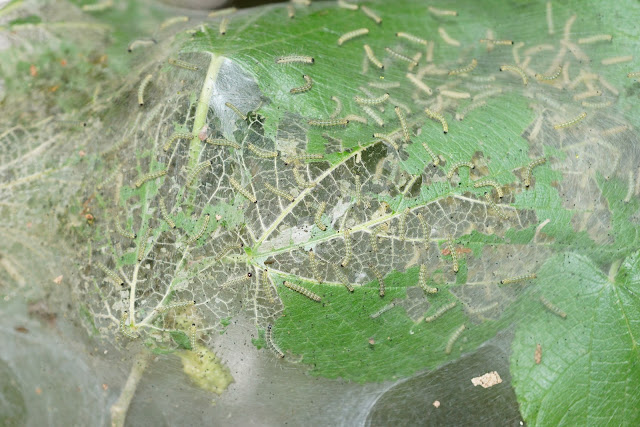Although one encounter with a parasitoid wasp
ended without incident, the queen caterpillars (
Danaus gilippus) were not out of danger. As I was looking over my pictures from the previous day, I noticed another wasp -- sitting on top of the largest of the queen caterpillars.
If you have trouble finding the wasp in the picture above, look between the 5th and 6th yellow stripes from the left, or just look at the close-up below.
 |
| A close-up of the parasitoid wasp on the queen caterpillar. |
In the subsequent pictures that I took (which unfortunately are not focused on the wasp), the wasp's abdomen is curved down and the wasp appears to be ovipositing (laying eggs) into the caterpillar. After inspecting this series of pictures, I decided to monitor the caterpillar closely for any sign that it was indeed parasitized. However, the next morning, the caterpillar had disappeared from the milkweed. By searching the surrounding area, I eventually located the caterpillar in a sheltered spot where it was beginning its transformation into a pupa.
 |
| The queen caterpillar preparing to pupate. |
One day later, there was a very healthy-looking chrysalis where the caterpillar had been.
 |
| The chrysalis of the parasitized(?) queen caterpillar. |
Over the next few days, the chrysalis continued to look as it should, without any dark discoloration to suggest that there were a couple hundred wasps developing inside instead of a butterfly. I left Florida before I could be sure what the result would be, but I have been informed that in the end the wasp's attempt failed and it was a butterfly that emerged from the chrysalis.
 |
| This is a different queen butterfly (Danaus gilippus), since I didn't get to see the one that emerged from the chrysalis. |




















































